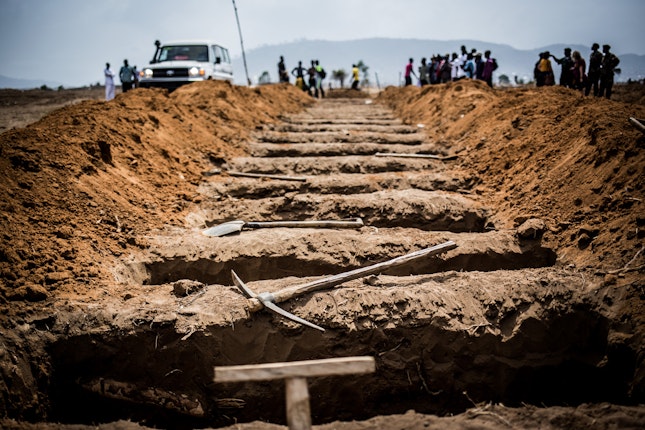A Photo Contest Captures Life with Ebola in West Africa
By Christopher Ifeanyi-Nwanze
In March 2014, the largest Ebola outbreak in history began sweeping through West Africa. A year later, it had claimed 10,000 lives and left countless survivors reeling in its wake. But figures alone cannot tell the human stories of those left to rebuild their lives—the decimated families and traumatized yet resilient and courageous communities that pulled through intact.
Bringing those stories into focus was the goal of a photo competition launched by the Open Society Foundations in August 2015. Ebola Through the Lens was conceived as an exhibit that would tell the stories behind the statistics, that could contribute to amplifying the voices and stories of those women, men, and children affected by the disease.
We received over 30 applications from a range of West African and international photojournalists, each of whom captured images of the epidemic’s devastation and the struggles to survive, recover, and rebuild that followed.
In many cases, the worst effects of Ebola were countered by the sheer resilience of the survivors—as individuals, yes, but mostly as communities that were often forced to improvise amid uneven, inadequate, and sometimes nefarious official response. The disease brought to bear deep-rooted flaws in the ways health care is provided in the region. A dearth of trained medical personnel and infrastructure, a lack of focus on prevention and education, structural marginalization of communities, distrust between citizens and governments, corruption, and overall weak governance and accountability in health systems were all key factors that enabled the virus to spread. Indeed, the spread of Ebola could be seen as merely a symptom of these larger structural ailments.
While the international community ultimately did come together to mount a strong public health response, there are important lessons to be drawn from these interventions. Perhaps the main takeaway is that communities were central to fighting the epidemic. At the end of the day, the efforts of local actors stemmed the tide of the disease. Going forward, these actors should be treated as integral advocates of more just, inclusive, and accountable health systems.
Though the region has periodically been declared Ebola-free, the virus continues to resurface, serving as a reminder that governments must take concrete action to address the flaws in their health systems. There are a number of lessons West African governments, as well as the broader international community, can learn from this epidemic, in regards to better coordination, more listening, and better-targeted support. By focusing on prevention, education, and information—and by removing barriers to access—officials in Africa and beyond can be better prepared for the next crisis.
Ebola Through the Lens will be featured at Photoville, an exhibition in Brooklyn, New York, September 21-25.
Christopher Ifeanyi-Nwanze is a communications officer at the Open Society Initiative for West Africa.








